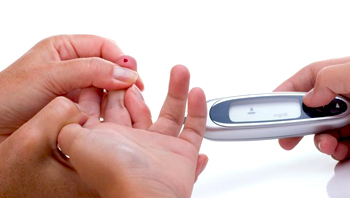London, Nov 8: Deficiency of vitamin B12 in mothers during pregnancy may put their child at greater risk of metabolic problems such as type-2 diabetes, scientists including those of Indian origin have warned.
 Researchers at University of Warwick in the UK believe that these findings could lead to a review of current vitamin B12 requirements for pregnant women, whether through an improved diet or supplements.
Researchers at University of Warwick in the UK believe that these findings could lead to a review of current vitamin B12 requirements for pregnant women, whether through an improved diet or supplements.
Vitamin B12 is naturally found in animal products, including fish, meat, poultry, eggs and milk, meaning deficiency is more likely in those following a vegan diet, researchers said.
Previous studies show that mothers with low B12 levels had a higher BMI and were more likely to give birth to babies with low birth weight as well as high cholesterol levels.
These children also had higher insulin resistance in childhood -- a risk factor for type-2 diabetes.
Researchers hypothesised that the changes associated with B12 deficiency may be the result of abnormal levels of leptin -- the hormone that tells us we are full after eating.
Leptin is produced by our body’s fat cells and its levels rise in response to eating food. Whilst lean diets are associated with normal levels of leptin, obesity causes levels to rise and remain consistently higher than normal.
This can eventually lead to leptin resistance, continued overeating and an increased risk of insulin resistance, which leads to type-2 diabetes.
Scientists and doctors therefore see leptin as providing an effective ‘marker’ for body fat.
The researchers found that babies born to mothers with B12 deficiency had higher than normal leptin levels. This suggests that maternal B12 deficiency can adversely programme the leptin gene, changing the levels at which the hormone is produced whilst the foetus grows.
“The nutritional environment provided by the mother can permanently programme the baby’s health,” said Ponusammy Saravanan from University of Warwick.
“We know that children born to under or over nourished mothers are at an increased risk of health problems such as type-2 diabetes, and we also see that maternal B12 deficiency may affect fat metabolism and contribute to this risk,” he said.
“The leptin can increase for two reasons,” said Adaikala Antonysunil from University of Warwick.
“Either low B12 drives fat accumulation in the foetus, and this leads to increased leptin, or the low B12 actually causes chemical changes in the placental genes that produce leptin, making more of the hormone,” said Antonysunil.
“As B12 is involved in methylation reactions in the body which can affect whether genes are turned on and off, we suspect it may be the latter,” Antonysunil said.






Comments
Add new comment